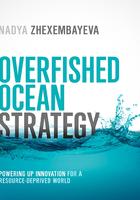
The Ocean of Waste
As I type these words, the room is filled with light and the smell of peonies. The desk is barely visible under the messy piles of papers and books. An old bag of chips smiles at me from behind the desktop. Always on the move, I have not touched my desktop computer for more than three months. Yet about 1.8 tons of raw materials were used to produce this single machine, which on its own weighsaround 30 pounds (14 kg). With this level of utilization, my computer will soon come to the end of its life cycle—we will simply clear up the space, getting rid of the unused device. More than 47.4 million computers were thrown out in 2012 in the United States alone, and no more than 25 percent of those devices were recycled.
With this level of utilization, my computer will soon come to the end of its life cycle—we will simply clear up the space, getting rid of the unused device. More than 47.4 million computers were thrown out in 2012 in the United States alone, and no more than 25 percent of those devices were recycled. If we apply that percentage to my 30-pound computer, with only 25 percent of its weight recycled, that means that barely 0.19 percent of all originally mined materials would go recycled.
If we apply that percentage to my 30-pound computer, with only 25 percent of its weight recycled, that means that barely 0.19 percent of all originally mined materials would go recycled.
Fully 99.81 percent would be wasted.
It would be wasted not because the materials mined and processed to build the computers have no value, but rather because we have not been designing products and processes with that value in mind. Our throwaway economy works on the assumption that it is easier to make a new product than to reuse resources already processed.
But as we enter the 21st century, “throwaway” is going away. The UK warned that it would run out of landfill space by 2018. Dubai already approached this limit in 2012, when one of its two key landfills reached capacity and was on the brink of overflow.
Dubai already approached this limit in 2012, when one of its two key landfills reached capacity and was on the brink of overflow. The garbage crises in Naples and Bangalore became so famous that they reached the pages of most major media outlets, the New York Times among them.
The garbage crises in Naples and Bangalore became so famous that they reached the pages of most major media outlets, the New York Times among them.
With global landfills overextended to the very top of their capacity, no wonder that waste overspills in every direction. Most of us have heard of giant waste fields floating in our oceans. While no scientist has provided a definitive calculation of the size of any of the fields (Massachusetts? the Netherlands? the moon?), CNN refers to one such field as an “enormous, amorphous, nasty soup that stretches for hundreds of miles.” The title of the article is no less telling: “The Pacific toilet bowl that never flushes.” Ready for a swim?
The title of the article is no less telling: “The Pacific toilet bowl that never flushes.” Ready for a swim?
Every time I hear these stories of waste, an impatient pragmatism in me demands: so what? For an environmentalist, the answer to this question might imply activism (and pessimism). But for an entrepreneur and manager, the implication is rather different. Architectand designer William McDonough and the rest of the Cradle to Cradle crowd made it into a simple formula: “Waste equals food.” In other words, hundreds of miles of plastic floating in the ocean is an environmental disaster indeed, but it is also a whole bunch of wasted petroleum that could, if approached with intelligence, be turned into a business opportunity. It all depends on the quality of your ideas.